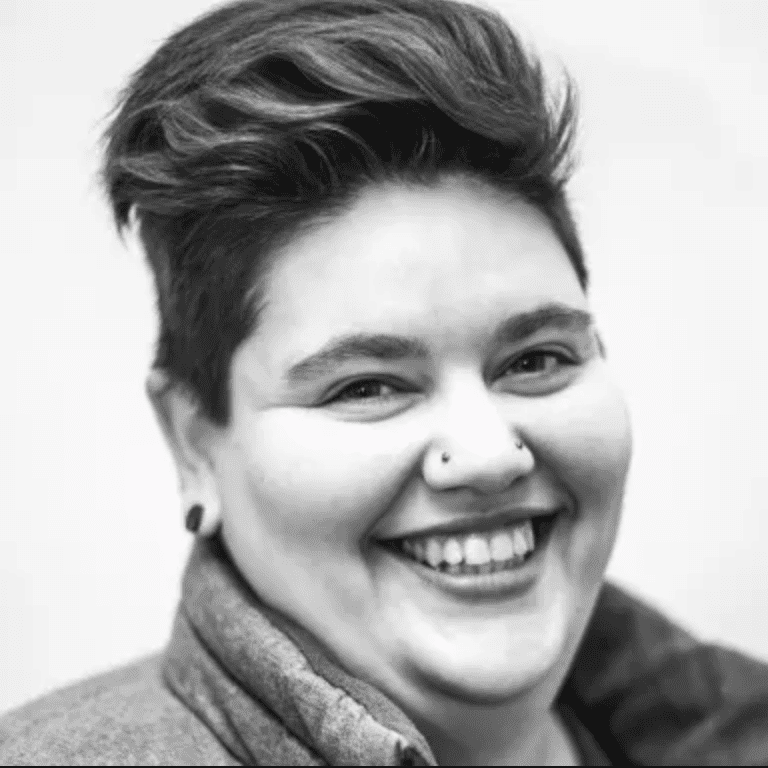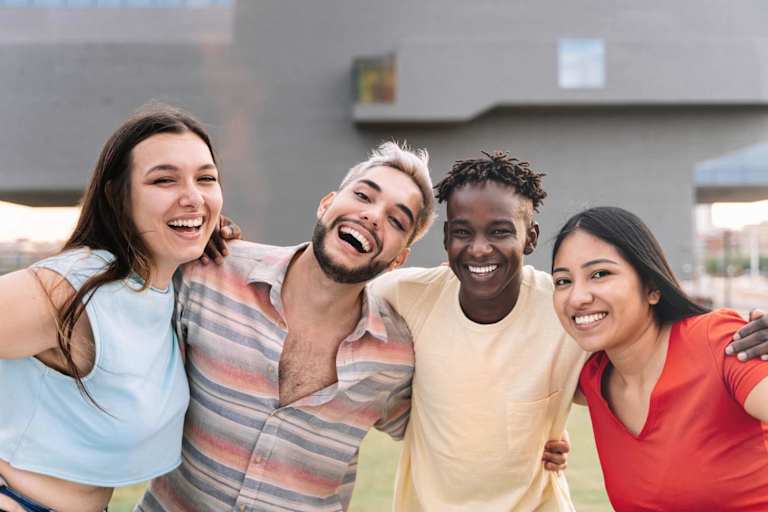Exploring the History of LGBTQ+ Centers on Campus
- Queer movements in the 1960s and 1970s inspired the creation of on-campus LGBTQ+ centers.
- These centers advocate for the LGBTQ+ community’s needs on campus.
- Centers should consider emerging social issues important to LGBTQ+ students.
- More colleges need LGBTQ+ spaces to support students’ development.
In 1971, the University of Michigan (U-M) established the first campus-based LGBTQ+ center. After facing increased pressure from newly recognized student groups, the Gay Liberation Front and the Radical Lesbians, as well as the student body as a whole, U-M relented and opened the center.
At the time, the emergence of the queer and trans movement across the nation inspired many students to advocate for LGBTQ+ centers at U-M and campuses around the country. Often led by trans women of color, the movement included flashpoints like the Compton Cafeteria episode (1966), the Stonewall uprising (1969), and the creation of the Detroit Gay Liberation Front (1970).
Community activists often supported or even led campus protests, including occupying a residence hall at New York University (NYU) in 1970. The founders of Street Transvestite Action Revolutionaries — Marsha P. Johnson and Sylvia Rivera — who were also involved in the Stonewall uprising the year prior, headed the NYU sit-in.
While schools were initially slow to open on-campus LGBTQ+ spaces, the 1990s and 2000s saw a surge of new centers across the country. According to a 2020 study in Socius, an American Sociological Association academic journal, LGBTQ+ student groups are now at 62% of U.S. colleges and universities. However, far fewer schools employ at least one paid professional staff member or graduate assistant to direct an official on-campus LGBTQ+ center.
The Functions of an LGBTQ+ Center
LGBTQ+ centers serve various functions depending on the institution type, students’ needs, staff size, and access to resources.
Scott Burden, the director of the Pride Center for Sexual Orientation and Gender Identity at Lehigh University, states, It is difficult to identify the primary purpose of an LGBTQ+ college resource center given the multi-faceted work that many centers do across college campuses. Overall, I believe the main purpose should be to ensure the overall success of LGBTQIA+ communities on campus and work to transform the institution so queer communities are able to thrive within all functions of the college or university.
Often, LGBTQ+ centers support and build community among LGBTQ+ students (and sometimes staff and faculty), advocate for changes in institutional policies and practices, assess the campus climate, and provide social and educational programs.
Helping LGBTQ+ Students Navigate College Life
College students typically interact with an LGBTQ+ center for support, resources, and programming. These spaces can help students navigate their academic institution, provide appropriate referrals, and validate their full and authentic selves.
Identity development can be an important part of the college experience, and LGBTQ+ center staff and volunteers often have the skills needed to accompany and support students as they discover themselves.
Offering Resources to Thrive on Campus
LGBTQ+ centers also offer resources. Many maintain small libraries full of books, documentaries, and media centering LGBTQ+ stories. Students looking to get involved on campus, connect with student organizations, and engage in activism can contact LGBTQ+ centers to find opportunities, connections, mentorship, and guidance.
Some LGBTQ+ centers provide access to computers, scholarships for LGBTQ+ students, clothing exchanges, and travel funds to attend LGBTQ+ conferences. Their websites are also great places to look for resources.These spaces often provide useful information about navigating campus life, including how to change your name and gender marker on your ID and where to find all-gender restrooms on campus.
Teaching About Issues Impacting LGBTQ+ Students
One of the most visible functions of LGBTQ+ centers is offering social and educational programming, such as Safezones, keynote speakers, performances, and film screenings. These are sometimes held on various LGBTQ+ awareness days, such as Intersex Awareness Day, Trans Awareness Week, and LGBT History Month.
Challenges Facing LGBTQ+ Centers
While the growing number of LGBTQ+ centers on college campuses marks a positive shift, historically excluded groups still face challenges, including within these spaces. LGBTQ+ students of color, trans students, and LGBTQ+ students managing disabilities often report feeling excluded and unvalued at LGBTQ+ centers.
Not Considering LGBTQ+ Students’ Intersecting Identities
Due to a lack of attention to systems of oppression other than heterosexism (such as racism, anti-Blackness, cissexism, and ableism), these spaces often center the experiences and needs of white, cisgender, nondisabled, gay students.
“College campuses were not created for queer communities, most especially queer BIPOC communities. This creates challenges as we work against white supremacist structures that maintain normativity and promote rigid binaries across the institution. We also have to work against these structures within our own queer spaces which often center white, cisgender queer experiences at the expense of queer and trans BIPOC communities. These challenges impact LGBTQ+ students as they seek to persist and graduate from institutions that at times can be very challenging to navigate.”
LGBTQ+ centers are also not immune to biphobia or gender gaps in participation and sexism. These biases impact who benefits the most from these centers’ resources and programming. For example, a 2014 study in the Journal of Diversity in Higher Education showed that trans programming offered by LGBTQ+ centers tends to be about trans students rather than for them. Given the diversity of LGBTQ+ communities, LGBTQ+ centers must operate with an intersectional lens.
LGBTQ+ Students’ Struggles With Housing and Food Insecurity
LGBTQ+ centers must also grapple with how to support college students facing food and housing insecurity. After surveying 43,000 students at 66 four-year and community colleges, a 2018 report by the Wisconsin HOPE Lab showed that lesbian, gay, and bisexual students experienced higher rates of food and housing insecurity and homelessness than heterosexual students.
The same was true for nonbinary students as compared with “male” and “female” students.[1] Also, according to the survey, bisexual students were at the highest risk for basic needs insecurity. LGBTQ+ centers often lack the resources, skills, or capacity to support students’ basic needs.
Lack of Funding and Support
Recent research examining LGBTQ+ center staff experiences shows that many of these spaces are understaffed, under-resourced, and need additional institutional support. Many students seek out LGBTQ+ center staff to support their collegiate needs, further stretching staff capacity.
Colleges Need to Better Support LGBTQ+ Centers
Despite these challenges, the 2018 National Study of LGBTQ Student Success highlighted LGBTQ+ centers’ significance in students’ sense of belonging, safety, and inclusion, as well as in their identity and leadership development. These centers are also rich resources for students to learn about LGBTQ+ history and culture.
Activism played an essential role in forming LGBTQ+ centers, and these spaces continue to be sites of empowerment, support, and mentorship for students seeking to advance social justice on campus and beyond.
Additionally, LGBTQ+ centers often offer graduate and undergraduate students assistantships, internships, and work-study positions, providing financial assistance and professional development in an affirming environment.
The opportunities and challenges facing LGBTQ+ centers and staff highlight the need to establish and better support these crucial spaces on more college campuses. Students are increasingly and unabashedly living their truths and seeking to get involved in social justice activism. The need for affirming spaces for students to develop their identities, leadership skills, and voices continues to grow.
Burden recommends that colleges and universities take the following measures to better support LGBTQ+ students:
- Comprehensively assess gender-inclusive spaces.
- Implement programming for LGBTQ+ students that accounts for the intersections of race, gender, ability, and other characteristics and identities.
- Allocate resources towards student health insurance, family housing, and additional services that affirm LGBTQ+ students’ diverse identities.
Best practices must ensure that we are centering those who are pushed furthest to the margins in our advocacy,
says Burden. [It is important to work] across departments and divisions to develop a vision for a college resource center that encompasses many different layers and works to build a campus community where queer people are able to thrive as their most authentic self.
With Advice From:

Scott Burden (he/him) is the director of the Pride Center for Sexual Orientation and Gender Diversity at Lehigh University. He was born and raised in Michigan and has a passion for building queer community while supporting all those in their journey toward authenticity. He is also passionate about educating folks about intersectional social justice and queer politics.
Scott has a BA in special education and an M.Ed. in college student affairs leadership. Additionally, he is currently a doctoral student in the teaching, learning, and technology program at Lehigh University. In his spare time, you will find him reading a book, snuggling with his dogs and husband, riding his bike, or going out for a run.
Explore More College Resources

College Experience Guide for LGBTQ+ Students
Explore common experiences and challenges of LGBTQ+ college students and learn how you can ensure your campus supports and affirms LGBTQ+ students.

by R.B. Brooks
Updated June 12, 2023

The Importance of Queer Studies
Learn about the history and interdisciplinary field of queer studies and why it is important for exploring gender, sexuality, and identity.

by R.B. Brooks
Updated January 25, 2022

